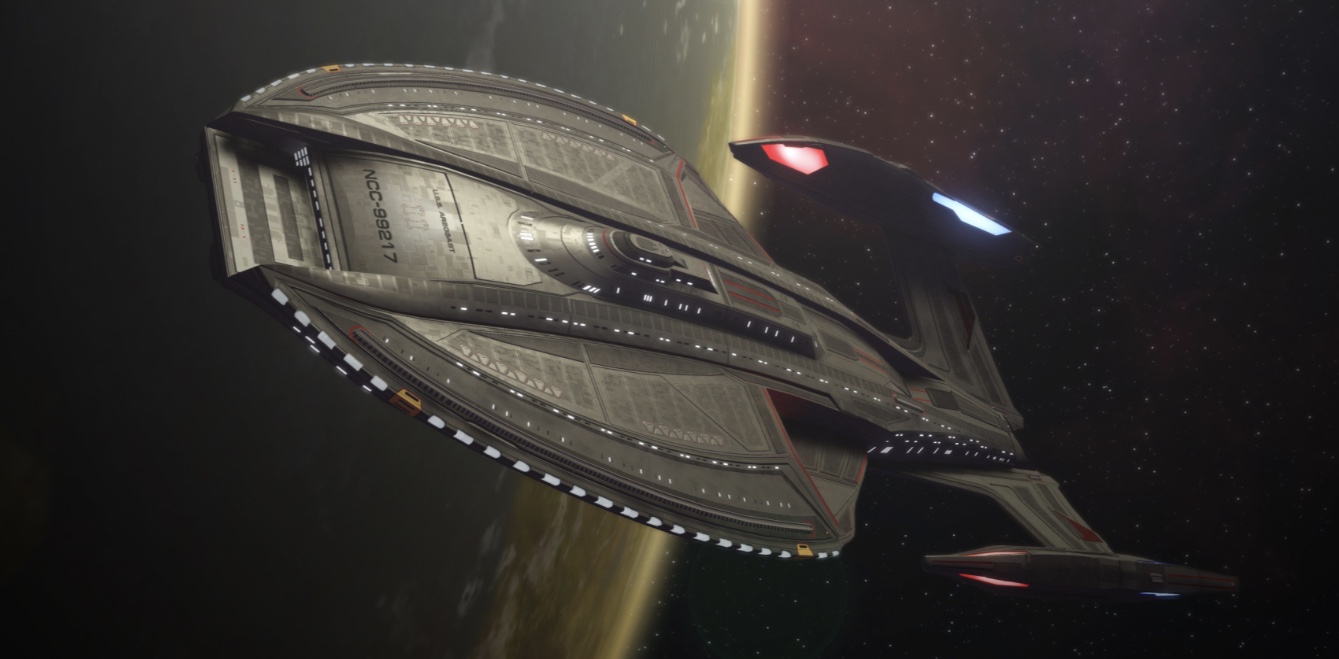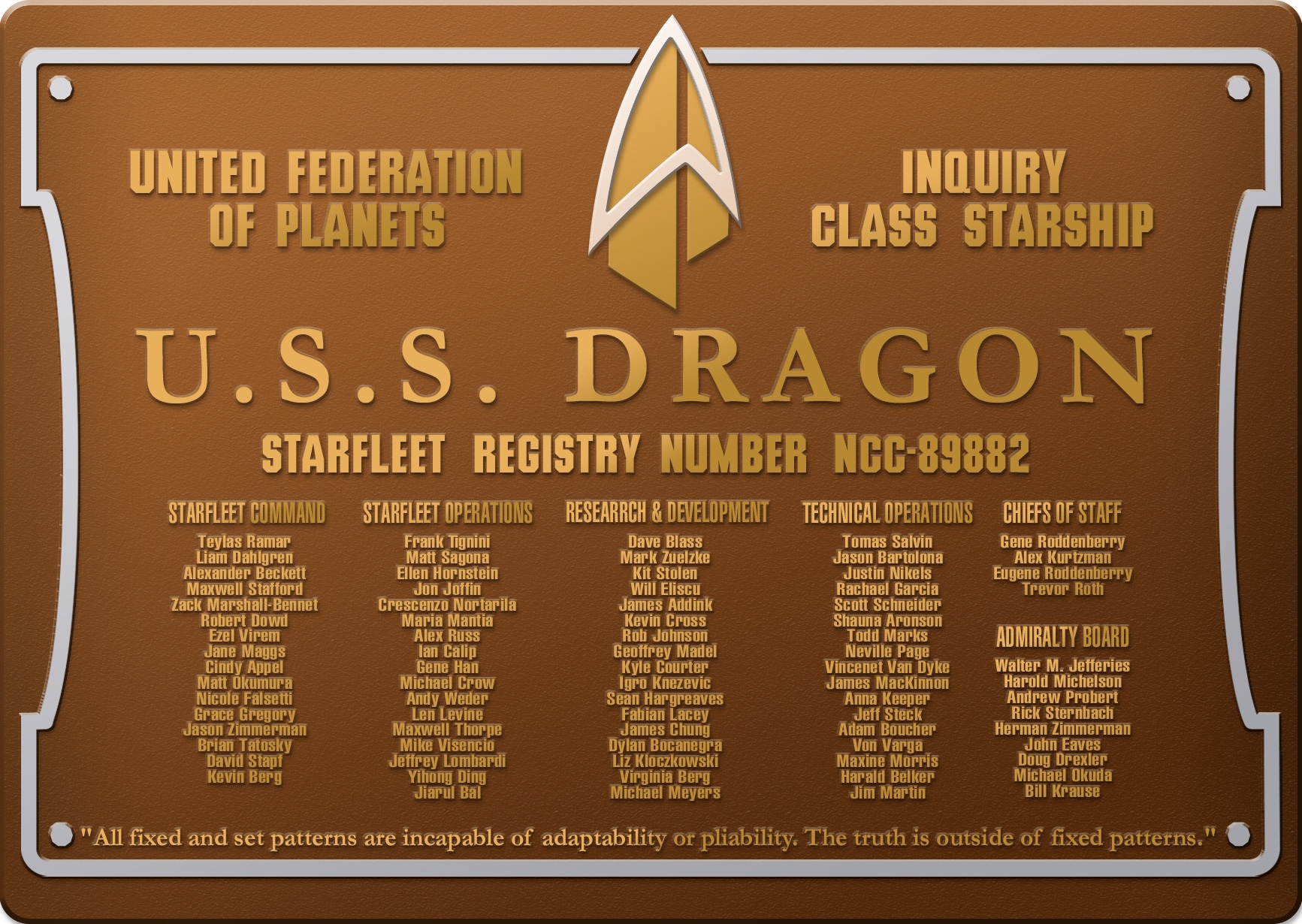USS Dragon

| |
| USS Dragon | |
| General Information | |
| Registry | NCC-89882 |
| Class & Type | Inquiry-class Cruiser |
| Affiliation | Starfleet |
| Status | Active |
| Assignment | |
| Task Force | Task Force 47 |
| Task Group | Task Group 13 |
| Squadron | Dragon Squadron |
| Role | Exploratory Cruiser |
| Key Personnel | |
| Commanding Officer | Commander Aryanna Rigras |
| Executive Officer | Lieutenant Meadow Bearsong |

| |
| Template:Starship | |
- "All fixed set patterns are incapable of adaptability or pliability. The truth is outside of all fixed patterns."
- —Bruce Lee
USS Dragon (NCC-89882) is one of the latest block three Inquiry-class ships to enter into service, assigned to Starfleet's Fourth Fleet in Task Force 47. Under the command of Commander Aryanna Rigras since March 2401. The Dragon is an exploratory cruiser with a secondary mission as an intelligence platform for operations in the Thomar Expanse.
History
The Dragon entered into service at the start of 2401. After a period of time to stand the crew up at Starbase Bravo they made their way to Deep Space 47 and the Thomar Expanse.
Having received their first set of orders the Dragon is on its way toward the Breen Confederacy security zone to carry out the first phase of their mission.
For their part in the the Lost Fleet Operation the Dragon had a two fold mission. One was to gather usable intelligence the second to hamper Breen and/or Dominion forces. The first was done by finding a Fleet that was preparing to attack the Deneb Sector.The second was accomplished by destroying the Dilithium mines on Deptrock SystemDeptrock VI, while doing so they freed and brought to safety over 2500 prisoners of war and slaves. The Dragon then took part in the Battle at Farpoint.
Design and Layout
The Dragons Den - senior officers mess/observation lounge The Dragons Den is a combination senior offers and bridge crew lounge and mess, located on the aft end of deck one is the “Mess” area which is open to the lounge area located on the aft end of Deck two. There is a single spiral staircase that connects the two areas.
The Dragons wings - the promenade area found on inquiry class ships. Stretching along the forward edge of the saucer, two decks high. Holographic emitters make it appear to be an open air park
The Watchtower “aka.. the Tower” - The forward observation lounge for the USS Dragon located over the forward shuttle bay. A relatively shallow in depth lounge, hence the reason why it is spread over two decks one overlooking the other. This is the all ranks lounge.
The Hall - The main crew mess hall. Also the only room large enough, beside the forward shuttle bay, to hold the entire crew of the Dragon. So it is often used as the main place where most crew gatherings are held.
The library - this two story room rings around the middle two decks of the ships computer core with a glass wall viewing the core. Two stories tall with bookshelves ringing the outer walls, in case anyone wants to read the old fashioned way along with several consoles allowing for online reading. Spread amongst the room are several recreations of mediaeval suits of armour and weapons. Cushioned couches, chairs and lounge seating is spread throughout the two levels. Two spiral staircases allow easy access between the two decks.
Mission Brief
Squadrons
2401: 612th MSS “Fallen Angels”